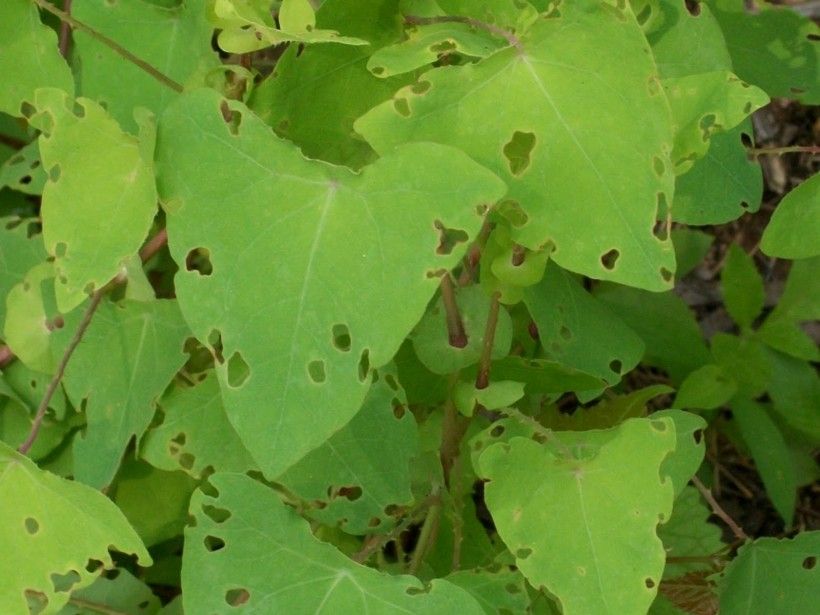Weevils on the Attack!
Mile-a-minute (MAM), Persicaria perfoliata, is an herbaceous, annual non-native vine that has severely degraded our natural landscape.
It can grow to 15 feet in height and often out-competes native vegetation by blocking light. Tree seedlings are often smothered as mile-a-minute vines climb over them at a rate of approximately six inches per day and a length of approximately 20 feet or more per growing season.
MAM is easily identified by its downward pointing hooks, or barbs, on delicate reddish stems. Its leaves are light green, alternate, 1-3 inches wide, and shaped like equilateral triangles. Its fruits are approximately the size of small peas and are found in metallic blue clusters located at the terminal ends of the stems.
Since MAM is an annual vine, small populations are relatively easy to control. However, larger infestations can prove daunting. Applications of a pre-emergent herbicide in March result in some success. However, because the seeds of MAM remain viable for 5-7 years, annual spraying is needed for at least that duration of time in order to extinguish the seed bank and prevent new seedlings from establishing.

If you have a population of MAM on your property, inspect the plant for the characteristic feeding damage. You will notice small holes originating from the middle of the leaf. If you observe these holes then the weevils have made their way to your backyard. Keep an eye on the plant as it grows and notice the amount of damage these weevils cause. Hopefully, the weevils will greatly diminish the abundance of MAM in our region and our native vegetation will reclaim its place in the landscape.